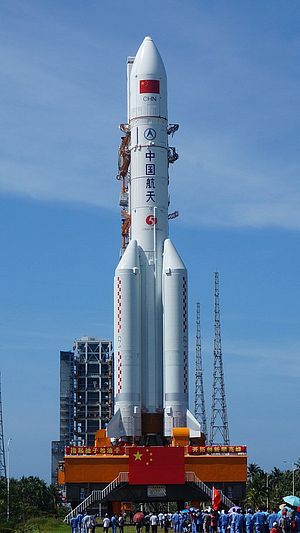China’s ambitious space project is rapidly moving forward. The Chinese Academy of Science (CAS), the main brain behind the Chinese national space project, held the third Beijing International Forum on Lunar and Deep-space Exploration from September 19 to 22. At the forum, Zhang Rongqiao, the chief architect of China’s Mars mission, revealed that China plans to carry 13 types of payloads and achieve three goals in its first Mars Probe, scheduled in 2020.
According to the agenda, the forum covered the most advanced technologies and the latest development in space science, including “the frontiers of lunar and planetary sciences, the new technologies of payloads in planetary exploration (including the Moon, Mars and asteroids and comets, and other planets), and the scientific vision of planetary exploration in future missions. ”
As one of the key speakers, Zhang holds multiple significant positions in China National Space Administration (CNSA). In addition to being the chief designer of China’s Mars mission, he is also the chief designer of China’s Deep Space Exploration Strategy and the deputy chief designer of the “Lunar Exploration.”
On September 20, Zhang revealed that China aims to achieve three goals — orbiting, landing and roving exploration — at the same time during China’s first Mars probe, scheduled in 2020. “It has never been done by other countries and the difficulties are unprecedented, too,” said Zhang.
He also disclosed that China plans to carry 13 types of payloads — seven orbiters and six rovers — to conduct research on the space environment, morphology, surface structure and atmosphere of Mars.
Zhang further explained the difficulties the mission will face, including long delays in data transmission due to the distance and the rover’s autonomous technology. “Despite the difficulties, we still hold full confidence,” added Zhang.
According to Xinhua, the Long March-5 carrier rocket will carry out the Mars mission from the Wenchang space launch center in southern China’s Hainan Province. After a seven-month journey, the lander will separate from the orbiter and touch down in the northern hemisphere of Mars. From the landing site, the rover will explore the surface.
China announced the 2020 Mars mission in April 2016, but few details have emerged since then.
Only the former Soviet Union, the United States, the European Space Agency and India have successfully sent probes to Mars. Only the United States’ NASA has successfully landed a rover on Mars.
In 2016, Chinese President Xi Jinping announced China’s grand project to explore the universe and designated every April 24 as China’s Space Day. “To become a strong space power is our long-pursuing dream,” said Xi.
China’s strong ambition to develop space technology has triggered anxiety in the United States. In September 2016, the Space Subcommittee of the House Committee on Science, Space, and Technology held a hearing, asking “Are We Losing the Space Race to China?”

































